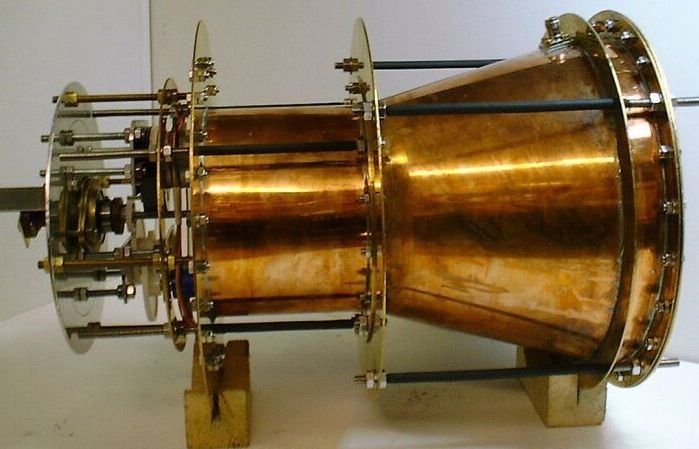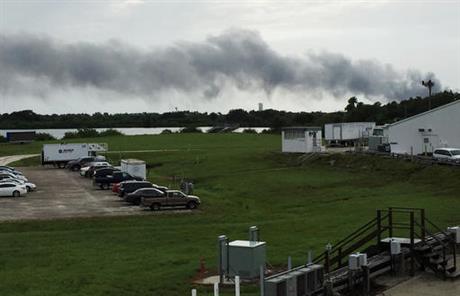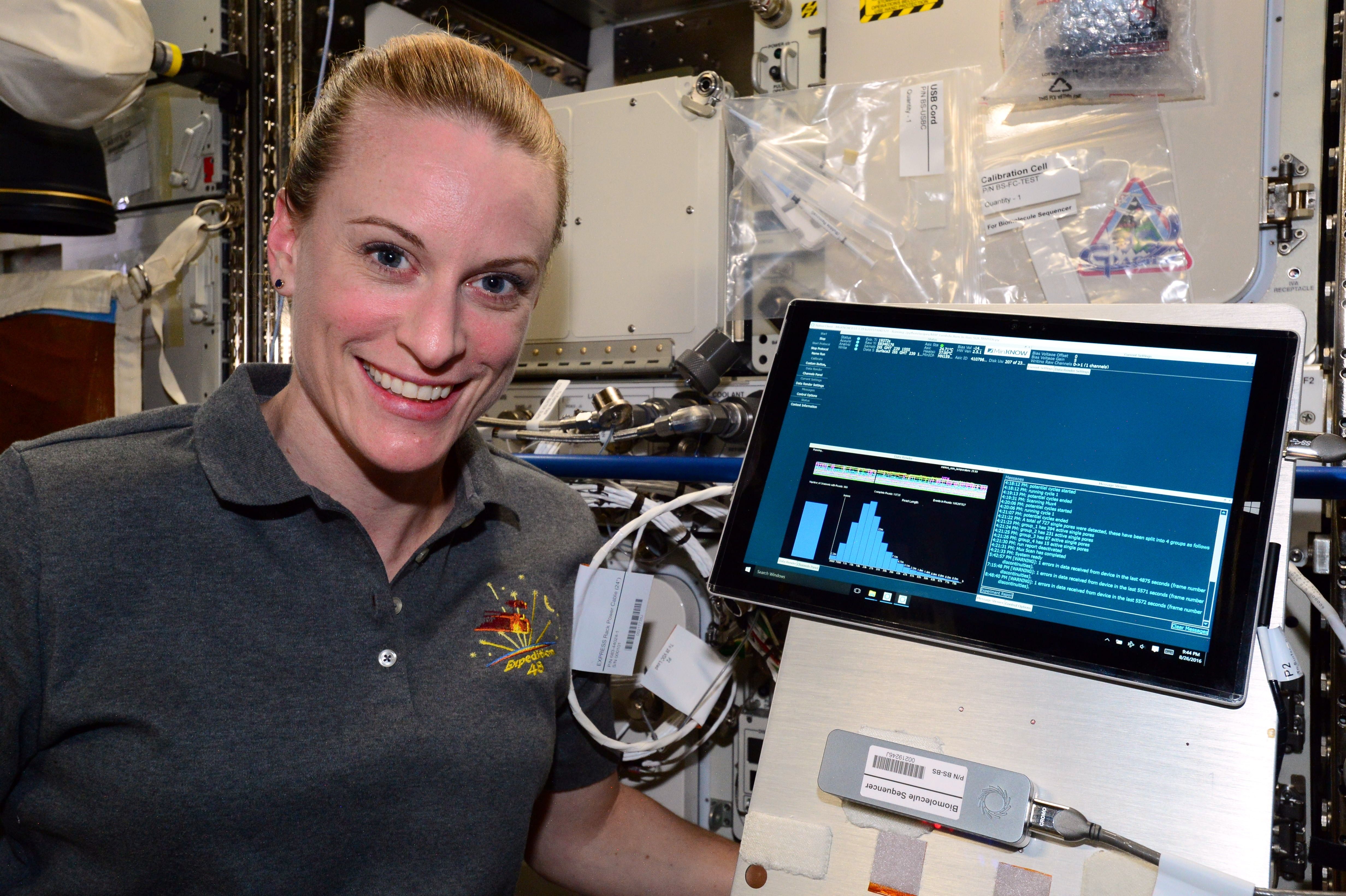Category: space travel – Page 506

Explosion at Cape Canaveral Air Force Station
Watch dramatic footage of the SpaceX rocket exploding at its Cape Canaveral launch pad http://cnnmon.ie/2cgE1QY

Explosion rocks SpaceX launch site in Florida during test
Whoops.
CAPE CANAVERAL, Fla. (AP) — An explosion rocked a SpaceX launch site Thursday during a routine rocket test.
SpaceX was conducting a test firing of its unmanned rocket when the blast occurred shortly after 9 a.m., according to NASA. The test was in advance of a planned Saturday launch from Cape Canaveral Air Force Station, which is next to NASA’s Kennedy Space Center.
Buildings several miles away shook from the blast, and multiple explosions continued for several minutes. Dark smoke filled the overcast sky. A half-hour later, a black cloud hung low across the eastern horizon.
Prospecting for Asteroid Resources — Deep Space Industries
http://deepspaceindustries.com/prospector-1/
Prospector-1, the world’s first commercial interplanetary mining mission, will fly to and rendezvous with a near-Earth asteroid to determine its value as a source of space resources.
The destination asteroid will be chosen from a group of top candidates selected by the world renowned team of asteroid experts at Deep Space Industries. Once the spacecraft arrives at the asteroid, the autonomous spacecraft will map the surface and subsurface, taking visual and infrared imagery and mapping overall water content. With the initial science campaign complete, Prospector-1 will use its water thrusters to gently touch down on the asteroid, measuring the target’s geophysical characteristics.
Prospector-1 is a small spacecraft that strikes the ideal balance between cost and performance. In addition to radiation-tolerant payloads and avionics, all DSI spacecraft use the Comet line of water propulsion systems, which expel superheated water vapor to generate thrust. Water will be the first asteroid mining product, so using water as propellant will provide future DSI spacecraft with the ability to refuel in space.
Animations and Art Direction by Bryan Versteeg: http://www.spacehabs.com/
Video by Subtractive: https://www.youtube.com/user/subtractive

First DNA Sequencing in Space a Game Changer
For the first time ever, DNA was successfully sequenced in microgravity as part of the Biomolecule Sequencer experiment performed by NASA astronaut Kate Rubins this weekend aboard the International Space Station. The ability to sequence the DNA of living organisms in space opens a whole new world of scientific and medical possibilities. Scientists consider it a game changer.
DNA, or deoxyribonucleic acid, contains the instructions each cell in an organism on Earth needs to live. These instructions are represented by the letters A, G, C and T, which stand for the four chemical bases of DNA, adenine, guanine, cytosine, and thymine. Both the number and arrangement of these bases differ among organisms, so their order, or sequence, can be used to identify a specific organism.
The Biomolecule Sequencer investigation moved us closer to this ability to sequence DNA in space by demonstrating, for the first time, that DNA sequencing is possible in an orbiting spacecraft.

‘Hibernating’ Astronauts May Be Key to Mars Colonization
Colonizing Mars may require humanity to tap into its inner bear.
Researchers are working on ways to induce a hibernation-like torpor state in astronauts — a breakthrough they say would slash costs and make the long journey to the Red Planet safer and far less taxing for crewmembers.
Such benefits could help lay the foundation for the first footsteps on Mars, and they’re essential to the establishment of a long-term human outpost there, project team members said. [Red Planet or Bust: 5 Crewed Mars Mission Ideas].

Meet “Solar Express” That can Take- Humans to Mars in presently 37 Hours
Interesting…
Earlier this year, Charles Bombardier dreamt up a way to tour between continents at hypersonic speed (think New York to Dubai in 22 minutes). However now he’s set his sights on something much larger. Pushing the limits of his mind out of this world, the Montreal-based leader has envisioned Solar Express—a futuristic train intended to ferry goods and passengers between celestial bodies and space station.

This russian billionaire has a plan to explore Proxima b, our closest Earth-like planet
Back in April, Russian billionaire Yuri Milner pledged US$100 million toward a crazy plan to visit another star system.
The mission — Breakthrough Starshot — aims to get this done by propelling teeny, tiny spaceships to 20 percent the speed of light with powerful lasers.
Milner and famed physicist Stephen Hawking initially said their destination would be Alpha Centauri: a star system located some 4.37 light-years (25.7 trillion miles) away from Earth.

SpaceX’s biggest rival is developing “space trucks” to ferry cargo in an orbital economy
The big kahuna of American rocket companies is the United Launch Alliance, a joint venture of Boeing and Lockheed Martin that until this year held a monopoly on the lucrative business of launching rockets for the US Air Force.
But that monopoly is no more. The company faces a new era of competition as Elon Musk’s maturing SpaceX aims to fly more space missions in one year than ULA does, and as Jeff Bezos’ Blue Origin breaks ground on a new factory for orbital rockets.
ULA, for its part, isn’t sitting still. “I came here to transform the company, position it in this new competitive marketplace with all these different players,” says Tony Bruno, who took the CEO job at ULA in August 2014 after a three-decade career in Lockheed’s missile-defense business. In his first full year in charge, ULA returned more than $400 million in operating profits to its two owners, but the company must prepare for when its final no-bid launch contract expires in 2019.